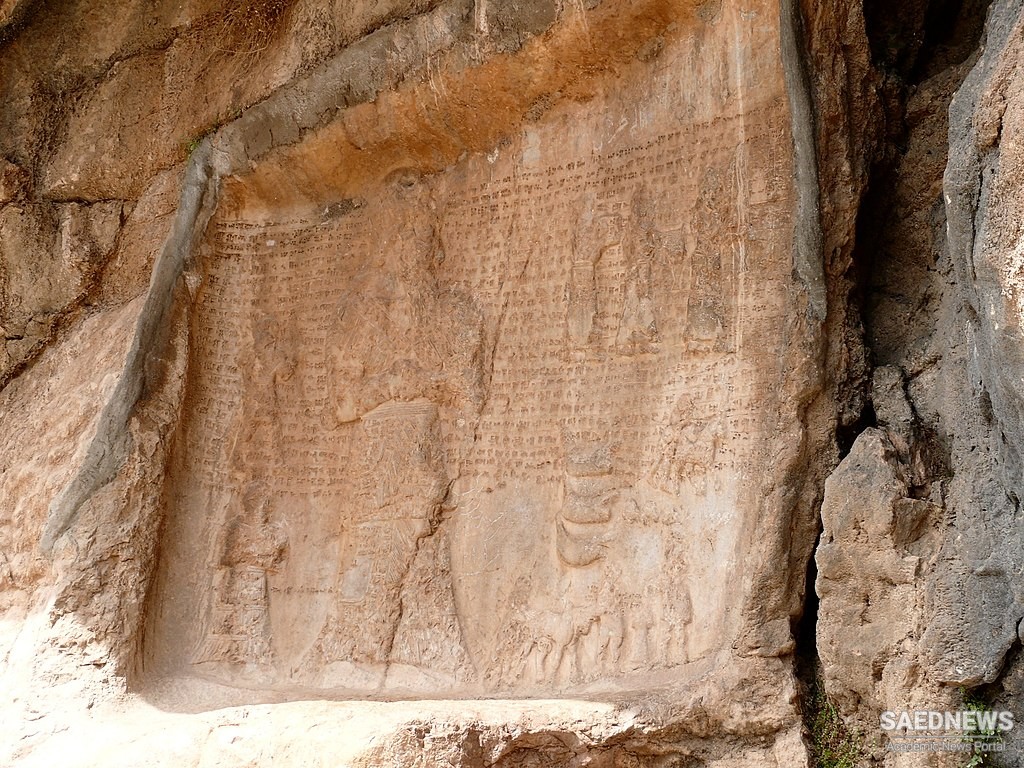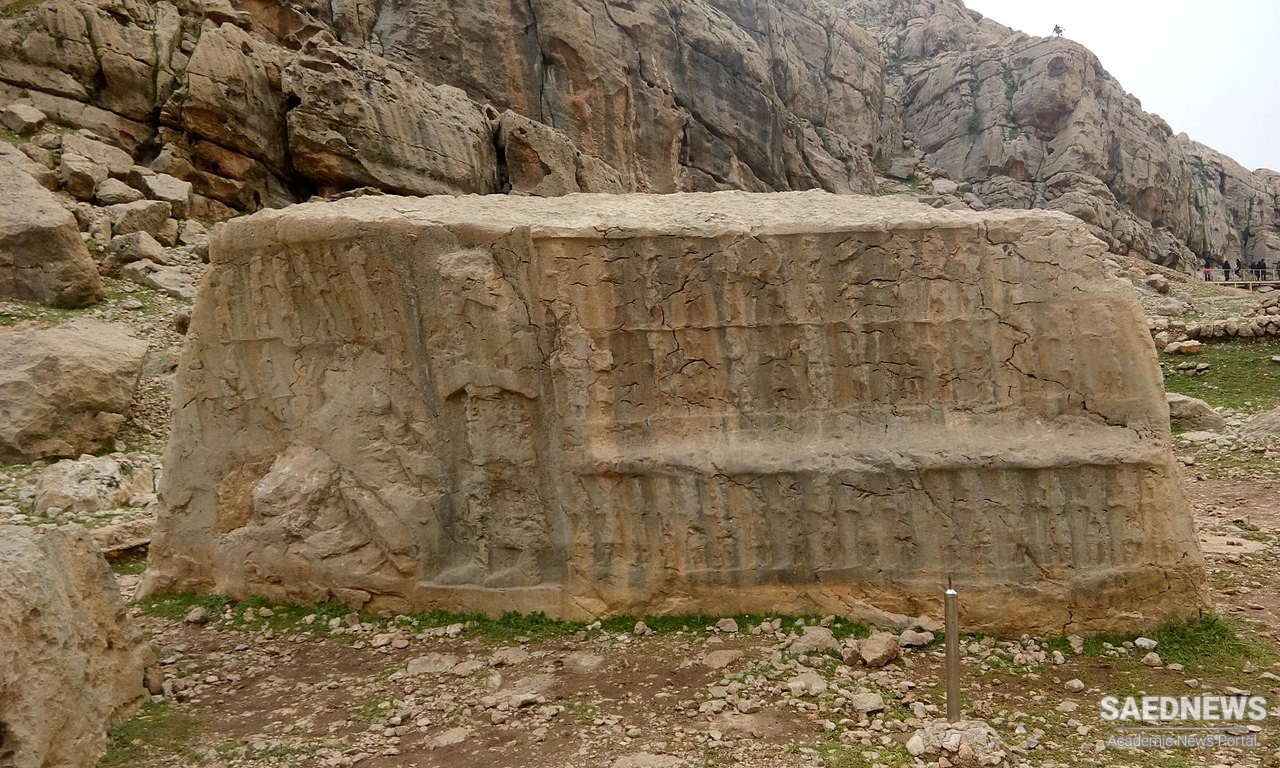Kul-e Farah (Henceforth KF) is an archaeological site and open air sanctuary situated in the Zagros mountain valley of Izeh/Mālamir, in south-western Iran, around 800 meters over sea level. Six Elamite rock reliefs are located in a small gorge marked by a seasonal creek bed on the plain's east side of the valley, near the town of Izeh in Khuzestan.
The earliest reference to the existence of the reliefs was made in 1836 by H.C. Rawlinson (1839) followed by A. H. Layard (1846) whose work included a preliminary account of the cuneiform inscriptions (for a complete bibliography see De Waele (1976a: 5-8). A study of selected reliefs was attempted by members of the French archaeological mission in Persia; in particular: G. Jéquier (1901), together with the ensuing epigraphic work of father V. Scheil, and sketches made by J. de Morgan. More than half a century later, a Belgian archaeological mission under the direction of L. Vanden Berghe (1963) began a project of more systematic documentation ensued by an in-depth study undertaken by Eric De Waele as the main focus of his doctoral dissertation (for the interlude 1901–1963 see historiography in Vanden Berghe 1963). Work by E. De Waele lasted between 1970 and 1975 (adding a total of close to two months of field work). The end result came in the form of an unpublished doctoral dissertation and a string of seven articles including illustrations and line-drawings (De Waele 1972a, 1972b, 1973, 1976a, 1976b, 1979, 1981, and 1989). A renewed interest in the reliefs has led to recent works by W. Henkelman (2008; particularly 2011: 128-33) and J. Álvarez-Mon (2010a, 2010b, 2011, 2013, 2017, 2019 and 2020).

KF I has been dated to the 8th century to the first half of the 6th century BC in accordance with the contents of a large Elamite cuneiform inscription engraved over its surface and with artistic analysis (Weissbach 1894; Scheil 1901: 102–113; Hinz 1962; König 1965, inscription EKI 75, and captions EKI 75A-K; Stolper 1988).
A more precise date to the last part of the Neo-Elamite period (after the Assyrian campaigns) is now recommended by Vallat (between 585 and c. 539 BC,1996: 387–9, 2006); Tavernier (last quarter of the 7th century BC, 2004: 19, 21; c. 630–610 BC, 2006); Henkelman (“to the very last part of the Neo-Elamite period”; 2008: 329); and Álvarez-Mon (650 – c. 550 BC; 2010: 50, 201, 266). The other reliefs used to be considered together as a single group manufactured sometime during the Neo-Elamite period or, more precisely: the “époque Elamite récente” (G. Jéquier 1901: 142; L. Vanden Berghe 1963: 39); the period of Elamite-Persian cohabitation (Calmeyer 1973: 15); a broader Neo-Elamite sequence ranging from the 9th to the 6th centuries BC (De Waele 1976a: 337; 1981: 52); and a period comprising the 8th–7th centuries BC (Vanden Berghe 1984: 102–3; for KF III and VI see Álvarez-Mon 2010: 39).
In 1984 E. Carter (1984: 172) proposed a pre-1st millennium BC date for KF IV. This was followed by P. Amiet (1992: 86-7) who, making exception for KF I and V, suggested the reliefs manifested the expression of a local monarchy that developed in eastern Elam after the invasion of the Babylonian king Nebuchadnezzar I (ca. 1104 BC), or perhaps slightly later, at the beginning of the 10th century BC. J. Álvarez-Mon has suggested dating the platform bearers represented at KF III and VI to the second half of the 7th century – 6th century BC ( Álvarez-Mon 2010a: 266; 2010b) and KF IV to the 9th – 8th centuries BC (2019).
The collective display of participants on KFIII (200 individuals), KFIV (about 140 individuals) and Kurangun II and III (about 43 individuals) flag a new chapter in the history of Elamite sculptural arts, offering a spectacle of social hierarchy determined by scale, placement inside registers, physical relationship to rulers, garment, gesture, and activities. This is an idealized view of a community strengthened through social bonds intimately attached to the notion of sacred space (Kul-e Farah and Kurangun), self-determined ethnic identity (marked by distinctive physical features, particularly long, braided hair), the enactment of specific rituals (processions, animal sacrifice, a communal feasting) and the reinforcement of custom (worship of old Elamite deities). All together: place, self-representation, and ritual provide a nexus of identity markers defining a population characterized by specific culture and socio-political ideology.
The specific location of the reliefs suggests that Kul-e Farah must have enjoyed a particular religious significance; perhaps of transcendent nature. Indeed, this evidence may advocate a belief system where the notion and experience of the supernatural developed out of close association with landscapes of extraordinary aesthetic natural properties. The reliefs from Kul-e Farah provide further indication of the legacy of the Elamite highlands as a cultural and socio-political nexus of ideology announcing that of the Achaemenids. In the words of W. Henkelman: The sanctuary of Kul-e Farah is “a dazzling complex of iconographic themes, religious concepts, social stratigraphy, and ideological strategies…. It is here, at Aiapir, that we get close to Elamite religion as one possibly can, and it is here that we find the most eloquent expression of a feast that, only a few generations after Hanni, was celebrated in similar form in Pārsa” (Henkelman 2011: 131 and 133).
Amiet (1992b: 89, nt. 37) theorized that this display of communal events and complex rituals expressed a “new consciousness” that arose from the settlement and commingling of Iranian-speaking nomadic populations with local Elamites. Yet, with only a single exception—the relief of Kul-e Farah I commissioned by Hanni of Aiapir—we have no information about who the large groups of people depicted in the reliefs were, or where they were living. Furthermore, the once-favored notion, taken for granted by Amiet, that they were nomadic pastoralists is no longer accepted by most specialists. Instead, it is likely that their socioeconomic and political fabric relied on agro-pastoralist activities, and dynamic power structures and regional alliances integrated within the Elamite kingdom.
Regardless of the linguistic, socio-economic and cultural backgrounds of the participants, the highland reliefs advocate for a continuity in Elamite religious belief and practice. Their placement at Kul-e Farah, and the related open air reliefs in the sanctuaries of Shekaft-e Salman, Kurangun and Naqsh-e Rustam suggests that the natural landscape was an essential component of traditional Elamite cultic ideology and practice. If the location of the sanctuaries and their resident deities were a vital component of Elamite religion, visiting and interacting with them were also essential elements of what it meant to be a member of Elamite society. Furthermore, the precedents that these reliefs set for Persian sculptural and religious tradition is palpable.


 Kurdistan the Land of Mysteries
Kurdistan the Land of Mysteries














































